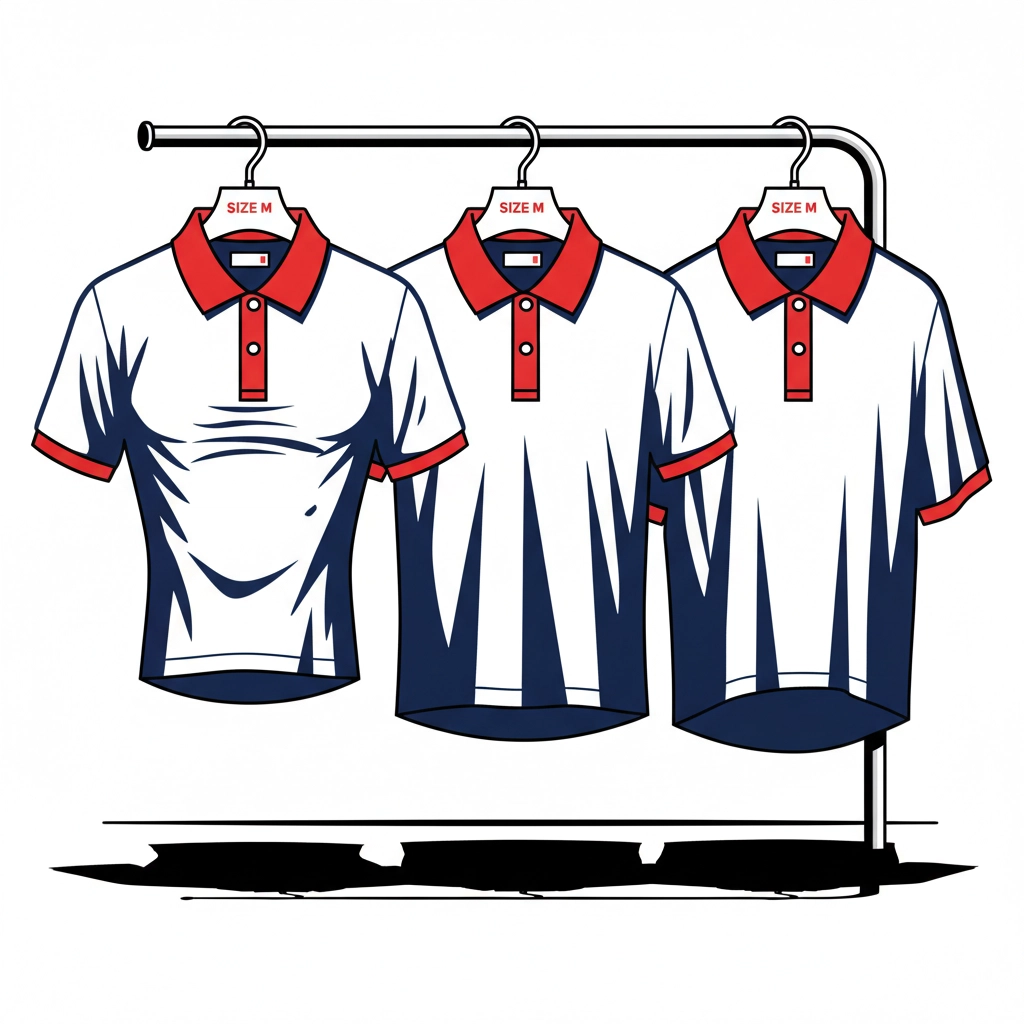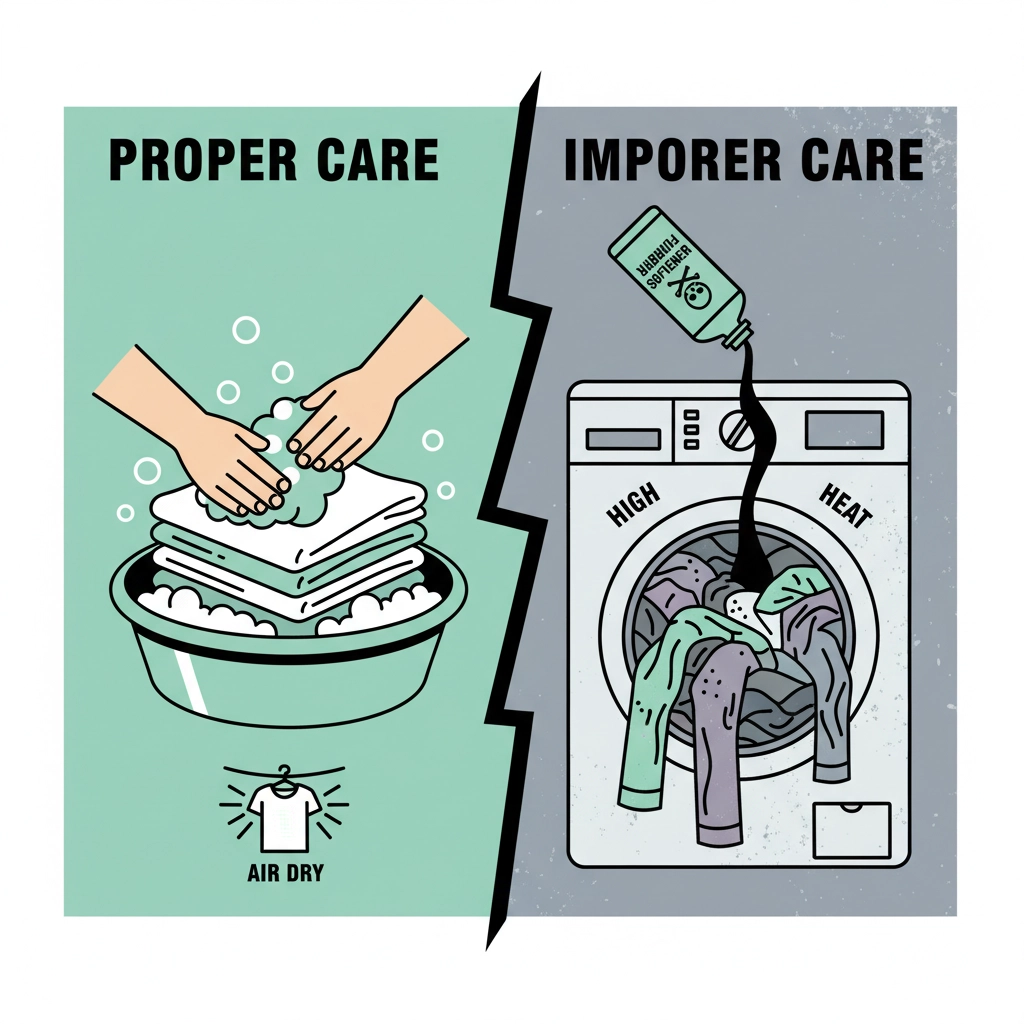7 Mistakes You're Making with Athletic Apparel (And How Purpose-Driven Brands Fix Them)
Every golfer has that one shirt hanging in their closet: the one that looked perfect online but feels like sandpaper on the course. Or maybe it's the polo that shrunk three sizes after one wash, or the "moisture-wicking" fabric that leaves you feeling like you've been swimming in a swamp by the ninth hole.
Here's the thing: these aren't accidents. They're symptoms of deeper problems in how athletic apparel gets made, marketed, and maintained. Whether you're building a brand or just trying to find gear that actually works, the same seven mistakes keep surfacing again and again.
But here's where it gets interesting. Purpose-driven brands: companies that stand for something bigger than profit margins: approach these challenges completely differently. They're not just selling you clothes; they're building relationships, communities, and movements.
Let's dive into the seven biggest mistakes plaguing athletic apparel today and discover how brands with real purpose are rewriting the playbook.
Mistake 1: Treating Sizing Like Guesswork
The Problem: Walk into any pro shop and try on three "medium" polos from different brands. Chances are, you'll get three completely different fits. Most brands base their sizing on personal preferences, influencer feedback, or generic charts pulled from the internet. The result? A medium that fits perfectly while the XL looks like it was designed for a completely different body type.
This happens because many brands skip the science of fit testing. They create one sample size, assume the math will scale perfectly, and hope for the best. Spoiler alert: hope isn't a sizing strategy.
How Purpose-Driven Brands Fix It: Companies that genuinely care about their customers invest in precision fit strategies from day one. They use specialized fit models, reference global sizing standards, and employ 3D sampling technology to ensure consistency across every size.
More importantly, they understand that real people have real bodies: not the idealized proportions found in design software. Purpose-driven brands create detailed sizing charts upfront and verify measurements across all sizes before production, because they know that when your gear fits right, you perform better and feel more confident.

Mistake 2: Flying Blind Financially
The Problem: Building an athletic apparel brand isn't like opening a lemonade stand. Yet countless entrepreneurs dive in without understanding the true investment required. They underestimate capital requirements, ignore cash flow realities, and operate on financial prayers rather than solid planning.
The result is predictable: brands that run out of money just when they're gaining traction, leaving customers hanging and dreams shattered.
How Purpose-Driven Brands Fix It: Smart brands develop comprehensive financial projections that account for everything from sampling costs to marketing expenses. They understand that sustainable growth requires patient capital, not desperate shortcuts.
But here's what sets purpose-driven brands apart: they view financial planning as stewardship, not just spreadsheets. When your brand supports something bigger: whether it's addiction recovery, environmental sustainability, or community building: you owe it to your mission to operate responsibly.
Mistake 3: The Perfection Trap
The Problem: Here's a scenario that plays out constantly in the apparel world: Brand receives sample. Brand notices minor imperfections. Brand gets frustrated, switches manufacturers, starts over. Rinse and repeat until the founder goes insane or runs out of money.
This perfection chase is actually perfectionism in disguise: and it's the enemy of progress. No matter how detailed your specifications are, some challenges will emerge during manufacturing. Fabric variations happen. Fit adjustments are normal. Minor details often require refinement.
How Purpose-Driven Brands Fix It: Purpose-driven brands understand that an 85-95% quality sample with a reliable manufacturer beats endless cycles of "perfect" sampling. They focus on building relationships with trustworthy partners who communicate clearly about what's possible and what's not.
More importantly, they make strategic decisions about which details actually matter to their customers and mission. Sometimes good enough really is good enough: especially when "perfect" prevents you from serving the people who need your product most.
Mistake 4: Tech Packs That Don't Work
The Problem: A tech pack is like a blueprint for your garment: except many brands create them independently or through inexperienced freelancers without any factory input. The result? Specifications that look great on paper but are impossible to execute in real life.
These flawed tech packs lead to products that don't perform as intended, can't be manufactured consistently, and often can't be sold at all. It's like trying to build a house with an architectural drawing that ignores structural engineering.
How Purpose-Driven Brands Fix It: Leading brands ensure their tech packs are created by experienced professionals and reviewed by manufacturers before production begins. A quality tech pack includes everything needed for a reliable first sample: comprehensive specifications, proper grading systems, and measurements that align with your sizing strategy.
Purpose-driven brands view tech packs as investments in their customers' experience. They know that getting the technical details right upfront means delivering products that actually solve problems and serve their mission effectively.

Mistake 5: Choosing Partners Based on Price Alone
The Problem: New brands often discover manufacturers through online marketplaces where factories claim to produce for major established brands, displaying photos of similar products. Here's the reality check: established brands would never allow their manufacturing partners to publicly advertise these relationships.
Top-tier manufacturers wouldn't risk their premium clients for small orders, and bargain-basement pricing usually comes with bargain-basement quality, communication, and reliability.
How Purpose-Driven Brands Fix It: Purpose-driven brands conduct thorough research and audits of manufacturing facilities. They prioritize transparency, reliability, and shared values over rock-bottom pricing.
They seek partners who understand their mission and are willing to grow together. This might mean paying slightly more upfront, but it results in consistent quality, better communication, and relationships that can scale as the brand grows.
When your brand stands for something meaningful, you need manufacturing partners who respect and support that mission: not just companies that see you as another purchase order.
Mistake 6: Brand Identity Chaos
The Problem: Many athletic apparel brands create logos and branding elements without considering versatility, longevity, or consistency across touchpoints. The result is fragmented brand experiences that confuse customers and weaken recognition.
Your Instagram looks different from your website. Your packaging doesn't match your hang tags. Your messaging changes depending on who's writing the copy that day. This inconsistency makes your brand feel amateur and unreliable.
How Purpose-Driven Brands Fix It: Strong brands design memorable visual identities that work everywhere: simple logos that look professional at any size, color schemes that reproduce consistently across materials, and messaging that stays true to core values regardless of the platform.
But here's what purpose-driven brands do differently: they ensure every brand touchpoint reinforces their larger mission. When your brand supports addiction recovery, mental health awareness, or community building, every interaction becomes an opportunity to advance that cause.
Consistency isn't just about looking professional: it's about building trust with people who are counting on you for more than just clothing.

Mistake 7: Destroying Great Gear Through Poor Care
The Problem: Even the best athletic apparel can be ruined by improper care. Using fabric softeners reduces breathability and moisture-wicking abilities. Machine drying causes elasticity loss. Wrong washing temperatures break down technical fabric blends.
Consumers often don't realize that caring for performance apparel requires different approaches than caring for regular clothing. The result? Expensive gear that loses its performance properties after just a few washes.
How Purpose-Driven Brands Fix It: Purpose-driven brands educate their customers on proper care through clear labeling, care guides, and ongoing communication. They recommend gentle washing cycles, avoiding fabric softeners, and air-drying to maintain technical properties.
But they go further: they view customer education as part of their service mission. When people invest in quality athletic apparel, they deserve to know how to make that investment last. Purpose-driven brands provide this education because they're genuinely invested in their customers' long-term success and satisfaction.
The Purpose-Driven Difference
Notice the pattern here? Every solution comes back to the same core principle: intentionality. Purpose-driven brands don't just happen to avoid these mistakes: they systematically address them because doing so serves their larger mission.
When your brand stands for something bigger than profit: whether it's supporting recovery communities, promoting mental health awareness, or building inclusive spaces: every decision gets filtered through that purpose. You can't serve your mission effectively with products that don't fit, brands that confuse people, or customer relationships built on disappointment.
At Skull & Bogeys, we've learned these lessons firsthand. Our journey from personal recovery to building a brand that supports others on similar paths has taught us that every detail matters when you're serving a purpose bigger than yourself.
The athletic apparel industry is full of brands making these seven mistakes every day. But it's also full of opportunities for companies that choose to do better: not just for profit, but for purpose.
Your gear should work as hard as you do. And the brands you support should be working just as hard to earn that support through quality, consistency, and genuine care for their community.
The choice is yours. But now you know what to look for.